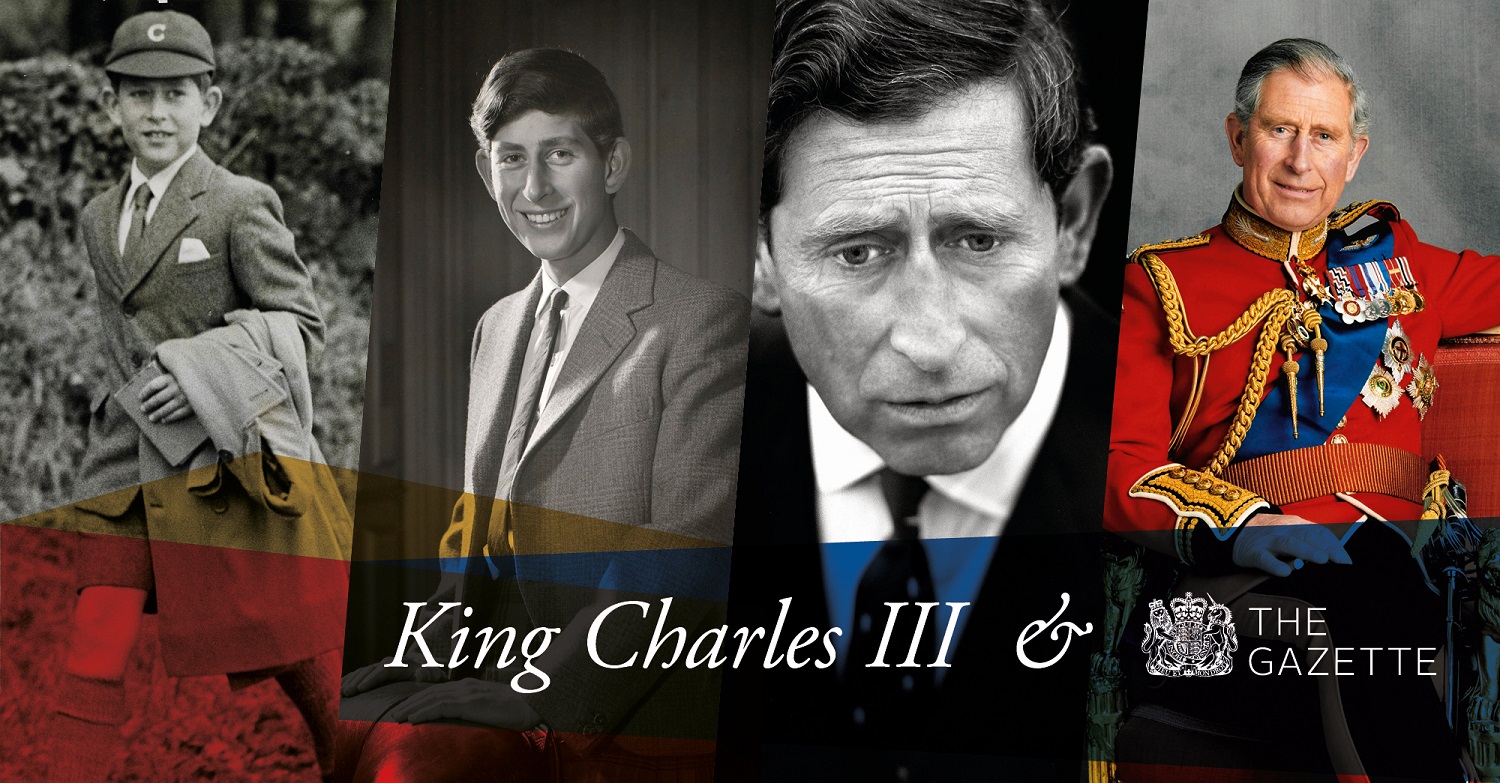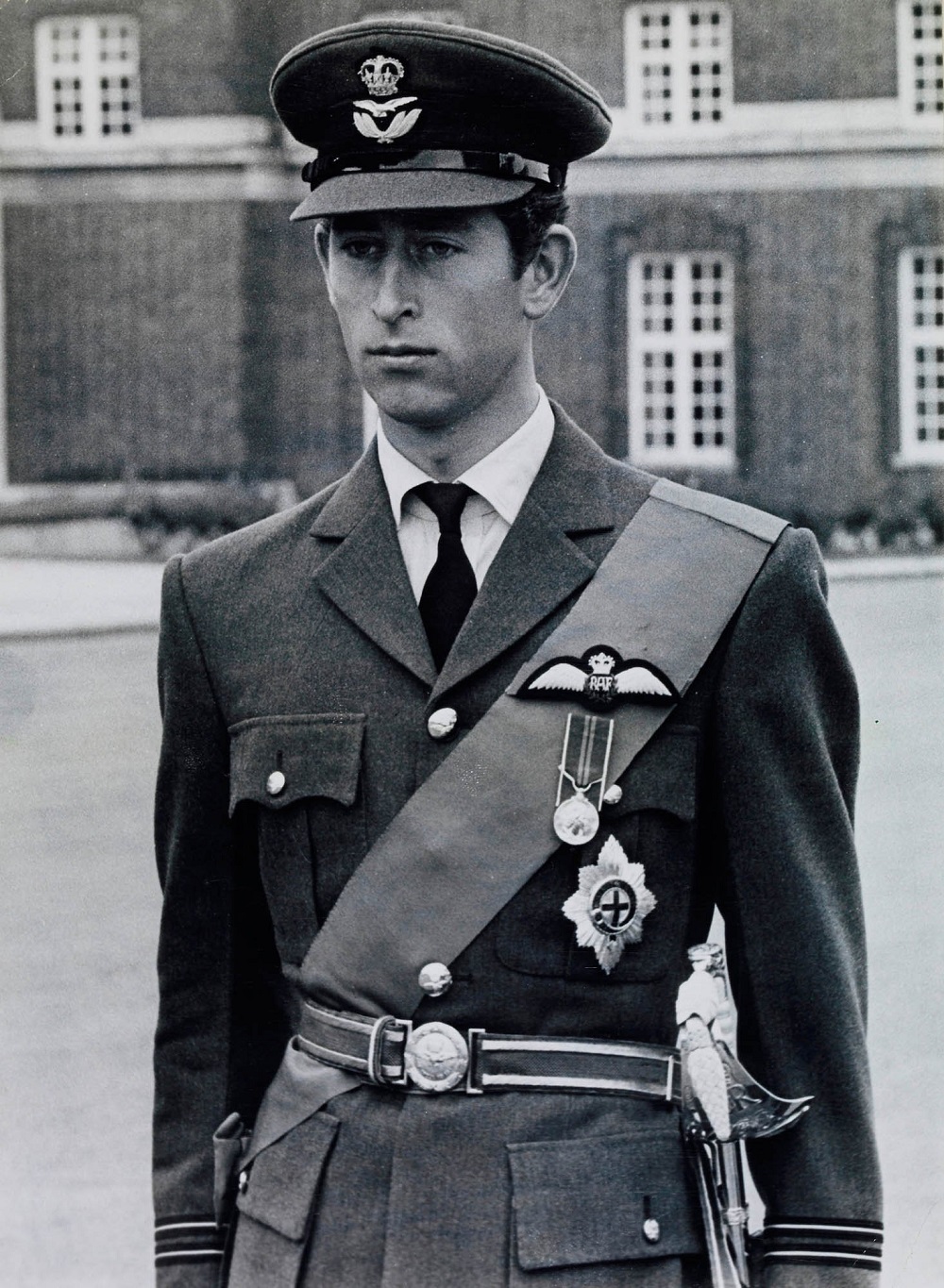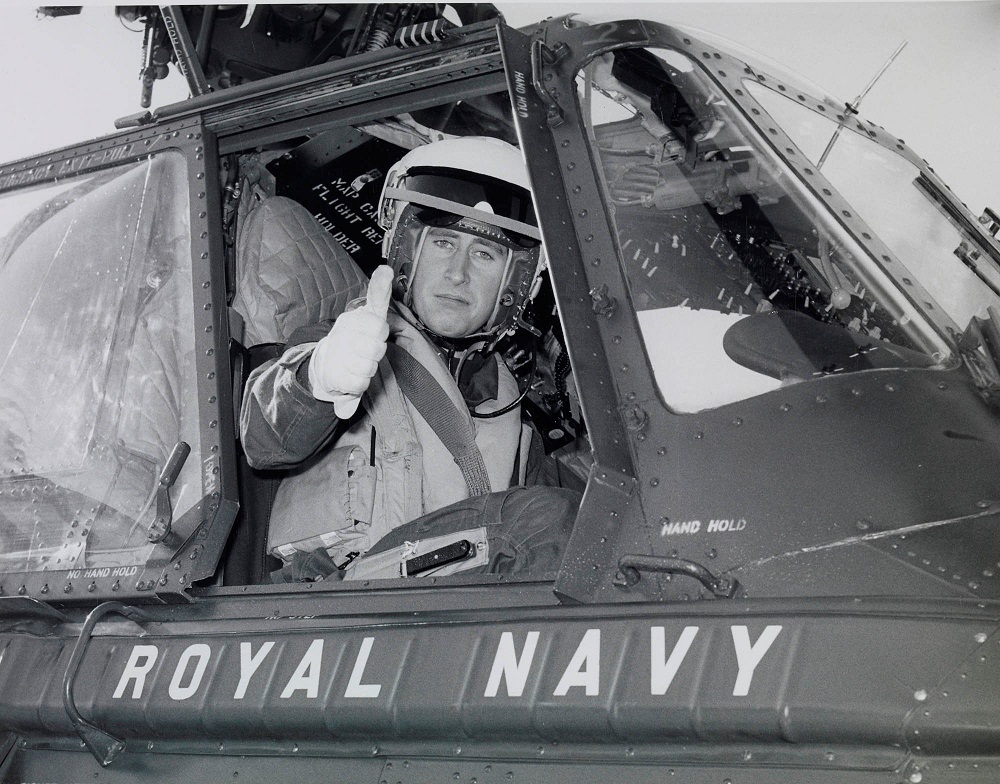King Charles III and The Gazette: Armed forces

Ahead of the coronation due to take place on Saturday 6 May 2023, historian Russell Malloch examines aspects of the new King’s life that have left a record in The Gazette. In this chapter, we look at Charles III’s relationship with the British armed forces.
Chapters
Armed forces
The feathers that appeared on Prince Charles’s heraldic memorials also formed part of the insignia that was assigned to several army units during his lifetime, as in the badges that were worn by the personnel of the Cheshire Yeomanry and the Royal Welsh.
The prince’s connections with the armed forces that were reported in The Gazette from the late 1960s fall into two main categories:
- his personal rank within each service
- the high positions he held within a number of units

Personal rank
The prince’s first commission was in the Royal Air Force. He had trained to fly while he was at Cambridge University and made his first solo flight in January 1969, with The Gazette noticing an award in the Victorian Order for his flying instructor, Squadron Leader Philip Pinney, in the New Year honours list of 1971 (Gazette issue 45262).
The Gazette recorded the prince being given a commission as a flight lieutenant on 8 March 1971 (Gazette issue 45318), but did not notice the award of his pilot’s wings, which he received from the chief of the Air Staff, Air Chief Marshal Sir Denis Spotswood, at a presentation ceremony at the Royal Air Force College, Cranwell, on 20 August 1971 (many years before the prince installed Spotswood as a knight grand cross of the Bath: see Knight of the Garter chapter).
As regards the senior service, the prince became a sub-lieutenant in the Royal Navy in September 1972 (Gazette issue 45770), and was promoted to lieutenant in December 1973, when he was also made a personal naval aide de camp to the Queen (Gazette issue 46148), which entitled him to wear aiguillettes with the crowned E II R cypher, and to place his mother’s cypher on his shoulder straps.
Prince Charles commanded the minesweeper HMS Bronington for several months in 1976 and was then subject to a combined series of promotions in the armed forces, as The Gazette of January 1977 announced that he had become a commander in the navy and a wing-commander in the air force (Gazette issue 47117). A similar procedure was adopted on his 40th birthday in November 1988, when he was advanced to captain and group captain (Gazette issue 51530).
The next promotions also coincided with his birthday, and the army began to be part of the process. The Gazette of November 1998 brought news about the ranks of rear-admiral, major-general and air vice marshal (Gazette issue 55312), and four years later a step up to vice-admiral, lieutenant-general and air marshal (Gazette issue 56811), followed in 2006 with promotion to admiral, general and air chief marshal (Gazette issue 58171).
The prince’s final step in the forces were times to coincide with the Queen’s golden jubilee in June 2012, when he was advanced to the highest rank in each service, becoming an honorary admiral of the fleet, field-marshal and marshal of the Royal Air Force (Gazette issue 60350). The prince then received the baton of a field marshal, which he carried during his remaining years as heir apparent.
This was only the second time that a prince of Wales had held the highest rank in one or more of the services before he succeeded to the Crown, as Queen Victoria’s son Albert Edward (Edward VII) became a field-marshal in 1875 and an admiral of the fleet in 1887. Two of Prince Charles’s more recent predecessors as prince of Wales gained high rank in the armed forces, but they did not assume the most senior rank until after they came to the throne in 1910 (George V) and 1936 (Edward VIII).

Colonel-in-Chief
Running in parallel with Prince Charles’s personal rank, was his status as colonel or colonel-in-chief of more than a dozen units of the British army.
This method of reinforcing the bonds between the royal family and the army began in June 1969, when the prince was made the first colonel-in-chief of the Royal Regiment of Wales, which was formed through the amalgamation of the South Wales Borderers and the Welch Regiment (Gazette issue 44871).
The prince attended the regiment’s inauguration parade at Cardiff Castle on 11 June 1969, when he wore his uniform as colonel-in-chief and presented new colours to the 1st battalion, as well as accepting the freedom of the city of Cardiff on behalf of the regiment. In March 2006 the Royal Regiment of Wales amalgamated with the Royal Welch Fusiliers to form the Royal Welsh, which displayed the prince’s three feathers in its badge (Gazette issue 57977).
The Welsh connection was extended in March 1975 when the prince became colonel of the Welsh Guards in succession to the Duke of Edinburgh, who had taken over the Welsh command from the Earl of Gowrie, VC, in July 1953, and now replaced Major-General Sir Allan Adair as colonel of the Grenadier Guards. Prince Charles and his father appeared in their new roles in the Welsh and Grenadier Guards for the first time at the Queen’s birthday parade on 14 June 1975.
The next major change in the royal colonels came at the time of the Queen’s silver jubilee in June 1977 when Prince Charles was made colonel-in-chief of four regiments (Gazette issue 47234). The list was headed by the Cheshire Regiment, with which the prince had links as earl of Chester, as well as the Gordon Highlanders, and the 2nd King Edward VII’s Own Gurkha Rifles (The Sirmoor Rifles). The silver jubilee also saw the prince become colonel-in-chief of the Parachute Regiment.
The post of colonel-in-chief of the 5th Royal Inniskilling Dragoon Guards was assigned to Prince Charles in April 1985 (Gazette issue 50085), and that was followed by his appointment as colonel-in-chief of the Army Air Corps on the 40th anniversary of the Queen’s accession, and then the royal honorary colonelcy of the Queen’s Own Yeomanry in June 2000 (Gazette issue 55908).
Some of these units disappeared as part of army reforms. This happened in February 1992 when Prince Charles became colonel-in-chief of the regiment known as the Royal Dragoon Guards, which emerged from combining the Inniskillings and the 4th/7th Royal Dragoon Guards. A similar appointment followed for the regiments that were formed from (a) the Sirmoor Rifles and the other three Gurkha infantry regiments (the Royal Gurkha Rifles), and (b) the Gordon Highlanders and the Queen’s Own Highlanders (Seaforth and Camerons) (the Highlanders (Seaforth, Gordons and Camerons)) (Gazette issue 52834).
Further nominations followed in August 2003 to deal with the legacy created by the death of the Queen Mother. The Prince of Wales took over as colonel-in-chief of the Black Watch (Royal Highland Regiment), a position his grandmother had filled since 1937. He also assumed the role of colonel-in-chief of the King’s Regiment and the 1st the Queen’s Dragoon Guards, positions she had held since the formation of those regiments in the late 1950s (Gazette issue 57032).
There were fresh developments in 2007, when a reorganisation of the infantry led to the Cheshire Regiment joining with the Worcestershire and Sherwood Foresters and Staffordshire Regiments to form the Mercian Regiment.

Regimental duties
Prince Charles carried out various duties in connection with his army roles, including receiving senior officers on taking up or relinquishing their position as say commanding officer, regimental colonel or colonel commandant.
He took part in ceremonies involving the units with which he was associated, as in June 2013 when he delivered new colours to the Mercian Regiment at Worcester, or in July 2021 when he presented new colours to the Parachute Regiment at Merville Barracks in Essex.
The prince handed Operational Service Medals to members of regiments who had recently returned from combat, as happened in June 2013 when he received the Royal Dragoon Guards at Clarence House, and in March 2017 when he delivered medals and held a reception at Buckingham Palace to mark the 40th anniversary of becoming colonel-in-chief of the Royal Gurkha Rifles.
Prince Charles visited his regiments at their bases around the United Kingdom and travelled to Europe to commemorate some of their past services. In June 2014, for example, as colonel-in-chief of the Army Air Corps he met veterans of the Glider Pilot regiment at Pegasus Bridge, and attended other events connected with the allied invasion of Normandy.
Five years later, in September 2019, as colonel-in-chief of the Parachute Regiment he attended a service of remembrance with Princess Beatrix of the Netherlands at Ginkel Heath at Arnhem to commemorate the 75th anniversary of Operation Market Garden in 1944, which was part of the allied advance into Germany during the war.
Air and overseas
The prince’s air portfolio was less extensive than its military equivalent, but included his nomination in April 1993 to be the honorary air commodore of Royal Air Force Valley (Gazette issue 53267), the station on Anglesey in the north of Wales which provided training facilities for fighter pilots and mountain and maritime rescue operations.
The Gazette also reported some of the prince’s Commonwealth appointments, including his silver jubilee place as colonel-in-chief of the Royal Australian Armoured Corps (Gazette issue 47236), and air commodore in chief of the Royal New Zealand Air Force (Gazette issue 47237).
Long Service Medal
One of the last medals Prince Charles received during his mother’s reign reflected his career in the armed forces and followed changes to the regulations governing the distribution of the long service and good conduct medals.
In October 2018 the Ministry of Defence announced that, following the Coalition Government’s review by Sir John Holmes, the medals had been extended to officers, and The Gazette duly reported that Admiral of the Fleet the Prince of Wales “KG KT GCB OM AK QSO PC ADC” had been awarded the Naval Long Service and Good Conduct Medal, with the addition of three clasps to denote the length of his service (Gazette issue 62445).
About the author
Russell Malloch is a member of the Orders and Medals Research Society and an authority on British honours.
See also
The Accession of King Charles III
Succession to the Crown: An introduction
Gazette Firsts: The history of The Gazette and royal coronations
Images
The Gazette
Royal Collection Trust / © His Majesty King Charles III 2023
Royal Collection Trust / © His Majesty King Charles III 2023
Royal Collection Trust / © His Majesty King Charles III 2023
Publication date: 28 April 2023
Any opinion expressed in this article is that of the author and the author alone, and does not necessarily represent that of The Gazette.
